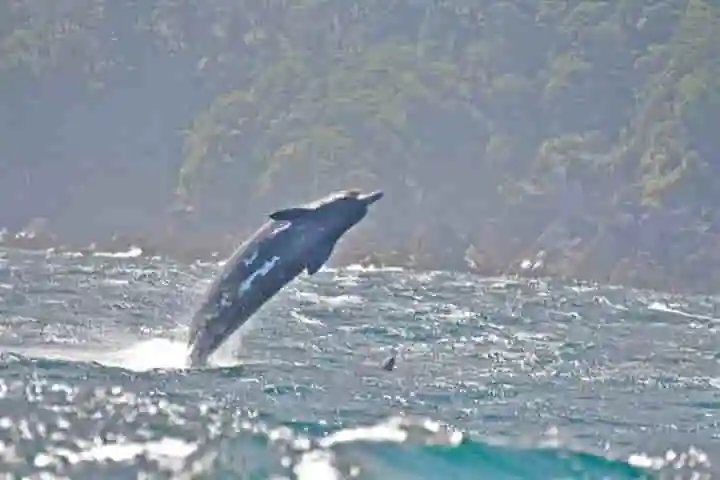In a recent study published in eLife last week it was suggested that whales in order to target their prey which is fast moving, use a combination of rapid echolocation adjustments as well as agile responses from the brain.
An article in sciencedaily.com said that the evidence from research done reflected that whales’ brains echolocating respond at speeds which can be compared to that of visual predators when these mammals are chasing their prey.
These findings are vital from the point of conservation of these creatures in the wild.
The study’s first author Heather Vance talking about this aspect said: “For example, primates' vision allows them to respond to sudden movements in as little as 50 milliseconds — less than the blink of an eye. But what about whales that use echolocation? We wanted to know if echolocators have a way to lock onto prey movements, like visual animals do, when they close in for the kill and how quickly they can react to prey movements."
Vance is a Postgraduate Student at the Sea Mammal Research Unit of University of St. Andrews in Scotland, UK.
Also read: Assassin Bugs That Master The Art Of Deception – Outsmart Spiders
Wanting to find answers to the question posed, Vance and her international team used a method which is non-invasive to watch whales’ sound and movement. To do this they fastened loggers for sound and movement – using suction cups – on six wild harbour porpoises and eight Blainville’s beaked whales. While the former stalk their prey in the shallow waters off Denmark, the latter live off the Canary Islands and are deep-diving creatures. The data they gathered on the click sounds that emanated from the whales and the echoes received by the animals to track prey movements were analysed.
It was found that the two whale varieties changed their clicking rate rapidly while tracking their prey. They discharged as many as 500 clicks per second when the pursuit of the prey became hot. The response of the creatures to changes in the position of the prey that were sudden in as little as 50 to 200 milliseconds was by modifying their clicking rate.
Explaining this point, Vance said: "Despite the high clicking rates of the whales, their response speeds were similar to visual responses in monkeys and humans, suggesting that their brains may be wired in much the same way as visual animals.”
Also read: Domestic Cats Hunt To Satisfy Their Killer Instinct And Not For Food
This study is an important addition to the knowledge about how the echolocation functions and it will help researchers and scientists to comprehend the evolution of this unique faculty. Further it will also help in understanding how the noise due to human activities and from ships impede the hunting abilities of the whales. All this has potential implications for the survival of the whales.
Summing up the study and its value, its senior author Mark Johnson who is an Associate Professor at the Aarhus Institute of Advanced Studies, Aarhus University, Denmark said: "Many whale populations are shrinking, which has led to efforts to help protect them. Knowing what conditions allow these animals to thrive will make conservation efforts all the more effective."




















